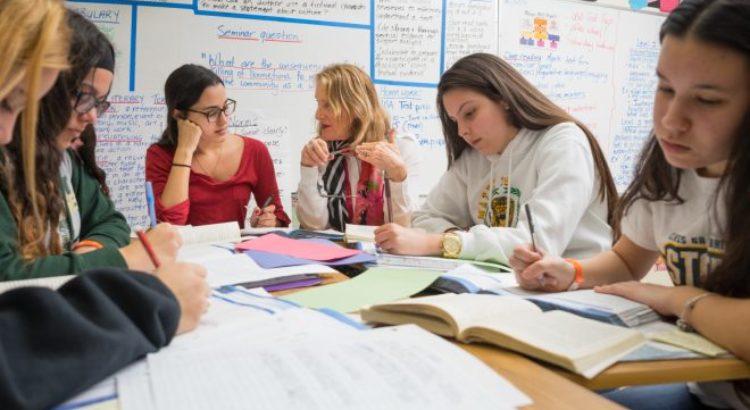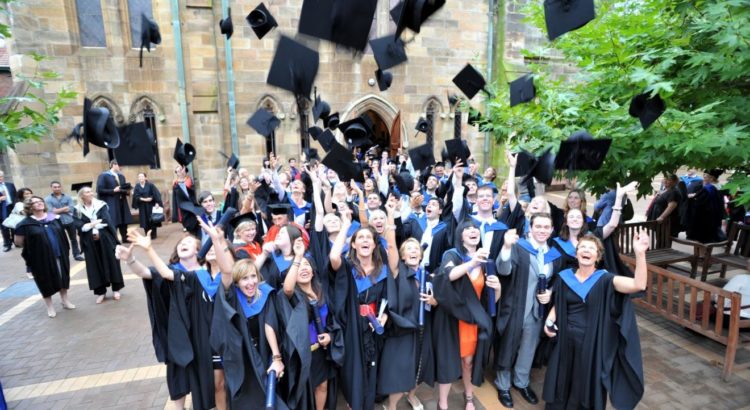By Matthew Lynch
We must grapple with digital equity, year-round schooling, gender parity in STEM, and more.
A couple of years ago, I wrote a post for my Education Futures opinion blog on edweek.org, entitled “10 Reasons the U.S. Education System Is Failing.” I listed 10 problems and issues that prevent the U.S. education system from living up to its potential. Even years later, my list—which addressed economic shortfalls, gender and racial disparities, parent engagement, and more—still periodically shows up as one of edweek.org’s top-read blog posts of the day.
Because of this sustained interest from readers, Education Week’s opinion editors thought it would be interesting to revisit this list, and I wholeheartedly agreed. Most of the reasons that I listed still ring true, so I am adding 10 additional emerging problems and issues with our education system.
Without further ado, let’s get started.

—Getty
1. In this digital age, we need to rethink literacy. Historically, literacy referred to print texts, but it’s becoming increasingly complex as we transition to a digital age. To accommodate this generational shift, educators need to start adopting a curriculum that covers digital literacy. Beyond basic reading and writing, students should be able to use technology to conduct research and make their own judgments about what they read. Without these skills, students will be left behind in our digital age.
2. The way we currently assess students is not working. The current testing system does not accurately measure the progress of individual students. In our digital age, we should be searching for testing options that can implement technology, gather information, and account for the differences among students who take the assessments. The initial cost outlay could be substantial, but we owe it to our students to create a fair testing system to help deliver brighter minds for the future.
3. We do a poor job of educating boys of color. Black and Latino boys have consistently been misunderstood in America’s schools. Their behavior, learning styles, and social skills are often misconstrued as problems. Until this situation is remedied, boys of color will continue to slip through the cracks. They have higher dropout, poverty, and incarceration rates than their peers. Perhaps the education system is partly to blame.
4. We continue to retain and socially promote students. The U.S. education system retains students at astronomical rates. The cost is outlandish, likely exceeding $12 billion annually, according to a 2012 estimate from The Brookings Institution, even though research shows that holding children back has little effect on their academic achievement. On the other hand, social promotion also poses a problem, as students will struggle to meet academic standards without extraordinary intervention. To end social promotion and retention, we must move from a graded classroom approach to a multi-age approach. Multi-age classrooms let students learn at an individualized pace, working to reach their full potential in their own time.
«The result is that wealthy students end up ahead, creating another barrier for schools with high poverty rates.»
5. Anti-intellectualism and academic disengagement are running rampant. In this digital age, students are accustomed to instant gratification. In response, school districts water down academic standards to keep students on an equal footing, but the result is academic disengagement. Traditional education is undermined by this growing anti-intellectualism. Today’s students are less inclined to pursue academic achievement if it offers no direct relevance in their daily lives.
6. We need more year-round schools. Most schools in America maintain the antiquated system of granting students the summer off, even though the economic justifications for such a schedule no longer exist. Unfortunately, the solid evidence that a switch to year-round schooling would improve our academic system is ignored because it’s too challenging to make a change. Teachers and policymakers alike would have to agree to switch up the status quo to accommodate this drastic shift in scheduling.
7. We are not able to consistently produce quality teachers. A child’s education is highly dependent upon the instruction they receive. The reality is straightforward: Not all teachers entering the classroom have enough training and experience to foster student learning. A strong teacher is an invaluable classroom tool, but we have yet to discover what it takes to produce strong educators with any degree of consistency.
8. We are not doing enough to foster digital equity. In the modern age, technology is an essential part of the world and academics. Students from wealthier backgrounds have greater access to the internet and technology in general than their impoverished counterparts. The result is that wealthy students end up ahead, creating another barrier for schools with high poverty rates. Digital equity could eliminate this gap and provide a more level playing field.
9. We are not doing enough to get girls involved with STEM. Despite Beyoncé’s declaration that girls run the world, there are still plenty of academic fields where females are underrepresented. The booming STEM industry is primarily male-dominated, with few opportunities for young girls to join. The issue is not a lack of interest but a lack of encouragement for girls to enter these fields or study the subjects at school. We must find new ways to promote STEM subjects to girls and help them foster a love for the mechanical and chemical.
10. Teacher-preparation programs don’t teach neuroscience. Most teacher-preparation programs focus exclusively on education instead of providing a more holistic view. Truly great educators need to understand neuroscience to grasp how the brain and nervous system work fully. It would fortify educators if they had a better understanding of how the brain learns new information and how strong neural pathways are formed. Even the most basic understanding of neuroscience could influence and improve the way teachers perform in the classroom.
The underachievement of the U.S. education system is not the result of one problem. It is a confluence of issues that undercut the cultural importance of education equity and broad-based intellect. To achieve better results, we must put aside partisan politics and petty policy disagreements and try to improve our schools, no matter what. I am overjoyed that my last piece has resonated with my readers, and I hope this installment will also strike a chord. Now, let’s get to work.
Source:
https://www.edweek.org/ew/articles/2018/01/29/10-more-reasons-why-the-us-education.html















 Users Today : 7
Users Today : 7 Total Users : 35460592
Total Users : 35460592 Views Today : 17
Views Today : 17 Total views : 3419566
Total views : 3419566